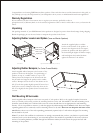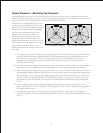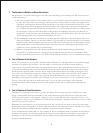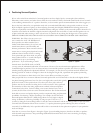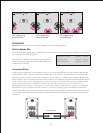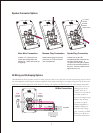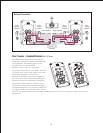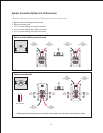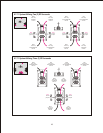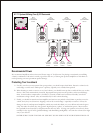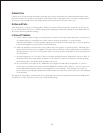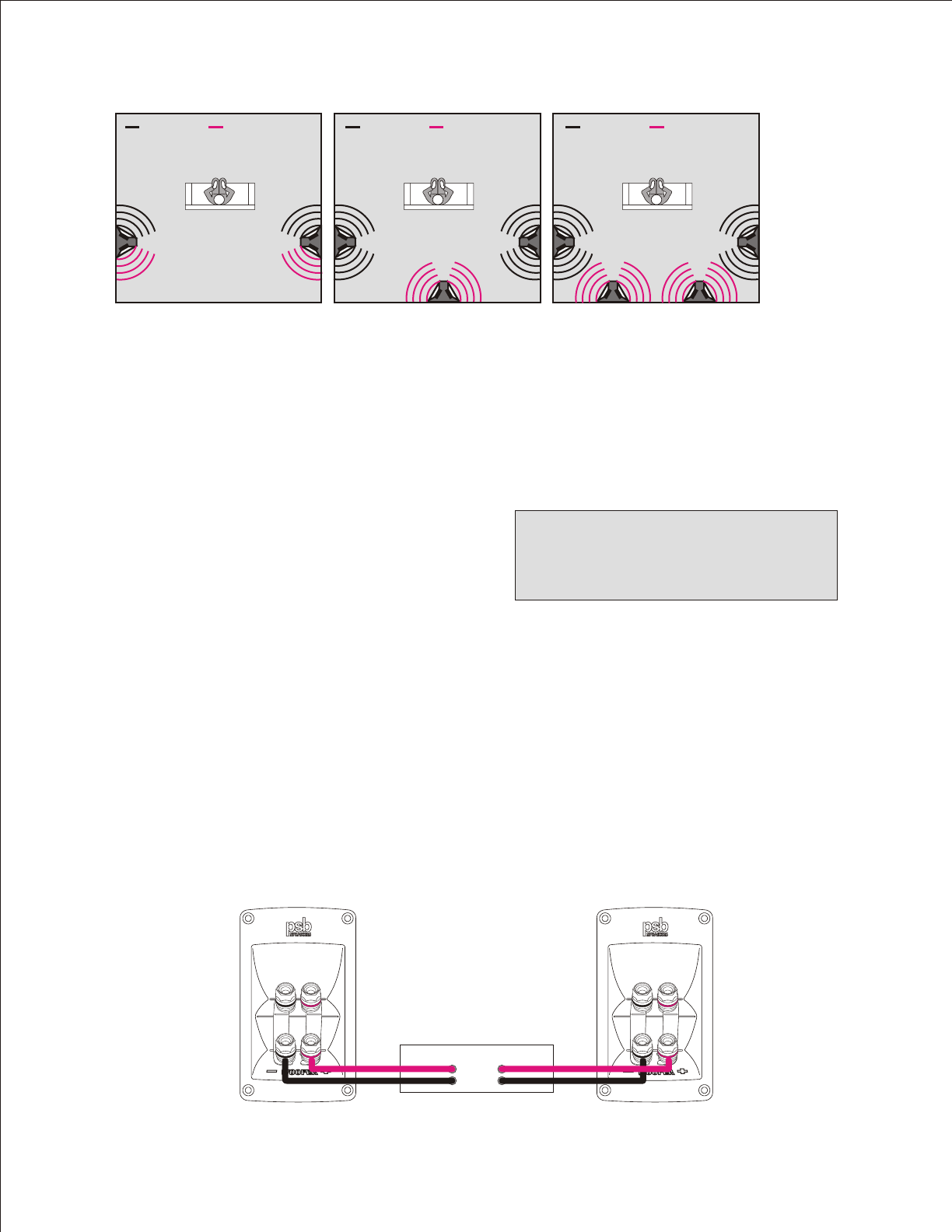
Connections
Important: Always turn off your electronic equipment before connecting speakers.
Selecting Speaker Wire
We recommend the following gauge of standard two-conductor wire for the wiring distances specified; if you prefer,
you can use heavier (lower-gauge) wire.
You may wish to audition and compare the performance of
some of the specialty audio interconnects and speaker cable
available from your dealer.
Conventional Wiring
Connect speakers identically to your amplifier or receiver on each channel Red amp/receiver terminal to Red speaker
terminal, Black to Black. This will ensure that the diaphragms of the speakers on both channels move forward and
backward together (“in-phase”), rather than in opposition (“out-of-phase”). In-phase connection provides maximum
clarity and bass, while out-of-phase connection results in frequency cancellations and produces thinner and less distinct
sound—with less bass, vague vocal quality, and no solid center image. To help ensure the proper connection, the two
separate conducting wires in a standard two-conductor speaker cable are coded in one way or another to be
distinguishable from each other. (The jacket of one wire may be ribbed or marked with “+” signs, or one wire under
the insulation may be a different color from the other.) Use this wire-coding, together with the amp/receiver and
speaker color-coding, to be sure you are connecting the same wire of a given pair to a like-coded terminal at both ends
of your connection. Assure all wiring terminals are tightened firmly but be careful not to overtighten and damage the
connectors.
— Surround Rear— — Surround Rear— — Surround Rear—
Figure 1
6.1/7.1 System using
two S2 Surrounds
Figure 2
6.1/7.1 System using
three S2 Surrounds
Figure 3
6.1/7.1 System using
four S2 Surrounds
6
Under 25 ft (7.5 m): 16-gauge – (1.3 mm)
25-50 ft (15 m): 14-gauge – (1.6 mm)
Over 50 ft (30 m): 12-gauge – (2.0 mm)
Amplifier Output
Right
+
-
Left




